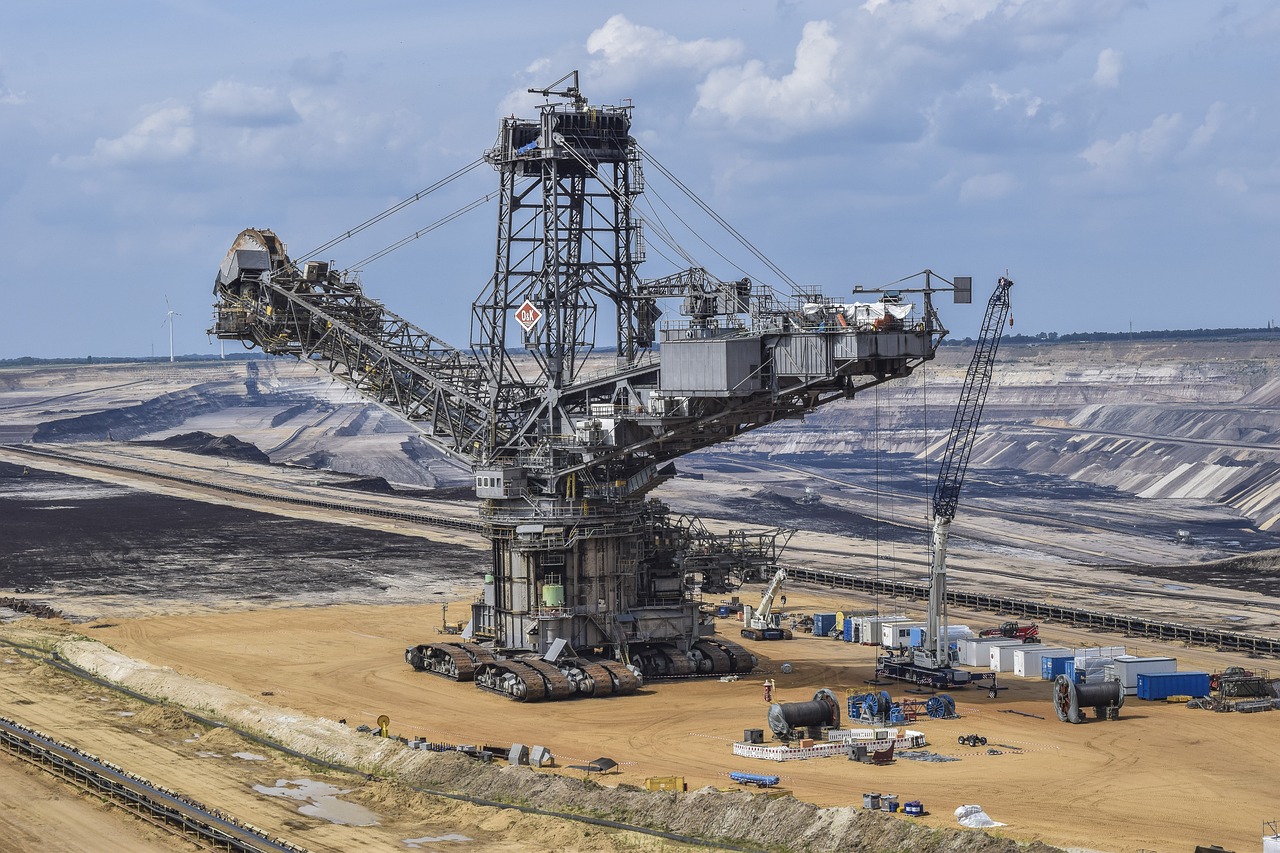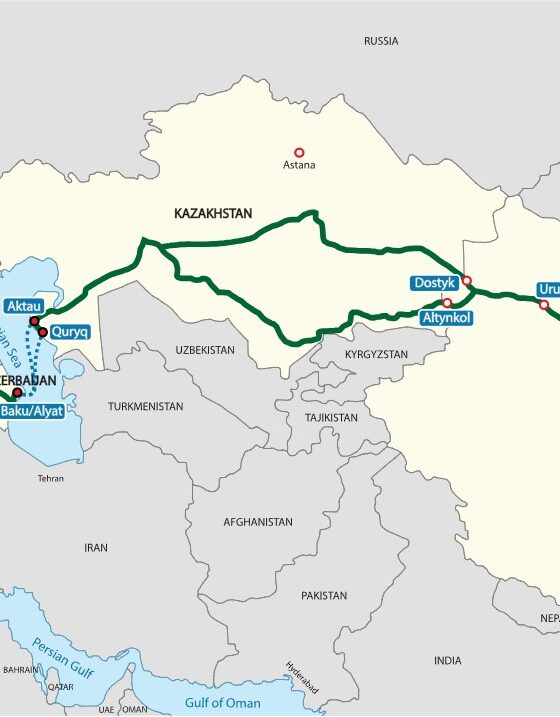The Caucasus, Central Asia, and Ukraine and Key Alternative Partners
Author:
Dr. Eric Rudenshiold is the Senior Caspian Affairs Fellow at the Caspian Policy Center. He served as Director on the National Security Council in the Trump and Biden administrations and is on the faculty at Johns Hopkins University’s School for Advanced International Studies.
Introduction
The United States lacks many of the rare earth materials needed to produce products vital to our economy and defense. The last Trump administration recognized the strategic vulnerabilities associated with China’s dominance in the global critical minerals supply chain. The new Trump administration will doubtless continue pursuit of this national security focus. The concern reflects broader geopolitical risks tied to US dependence on a single supplier for resources vital to industries like defense, electronics, and renewable energy.
China’s dominance of strategic mineral refining enables Beijing to increasingly influence global markets through rising protectionism and even weaponization of supplies. As the U.S. seeks to “reshore” mining capabilities, it must also “derisk” and diversify its rare earth and critical mineral supply, setting its sights wider to look for rocks in hard places. In this context, the Caucasus, Central Asia, and Ukraine emerge as surprising, enthusiastic, and promising partners, due to their rich mineral reserves, geopolitical positioning, and strong willingness to collaborate.
China’s Dominance in Critical Minerals:
China faces rare earth and strategic mineral supply vulnerabilities as well but has strategically leveraged massive amounts of these resources from countries across the globe. As the world’s largest importer of critical minerals, Beijing dominates refining and processing capabilities. This dominance spans rare earth elements and other materials essential for high-tech manufacturing to make airplanes, computers, cell phones, as well as electricity generation and transmission systems, and other advanced electronics. By 2022, among other strategic minerals for example, China processed 100% of the world’s graphite supply, 90% of rare earths, and 74% of cobalt.
In contrast, the United States imports more than half its annual consumption of 31 out of 35 critical minerals, while relying wholly on imports to supply 14 critical minerals that the United States has no domestic ability to produce. China’s critical mineral strategy transcends mere economic advantage—it intertwines with national security objectives and geopolitical influence. This centrality has led to vulnerabilities for importing nations, particularly the U.S., which is in line with the rest of the world to source significant proportions of its rare earth mineral needs from China.
With most rare earth elements processed in China, Washington’s reliance poses serious risks to its technology and defense sectors. The prior Trump administration flagged this dependence as a critical weakness, urging a reorientation toward reshoring and diversification to create more secure supply chains. While developing indigenous capacity will take time and significant investment, the United States is highly vulnerable to Beijing’s supply chain, policies, and political will.
China recently imposed export controls on germanium, gallium, and antimony, in response to U.S. semiconductor export controls. Both minerals are essential to defense-related semiconductor manufacture and their control enables China to exert influence and control over key defense and aerospace supply and logistics networks for external markets. This market measure generates fears of supply chain protectionism and even weaponization, as China has restricted rare earth exports to Japan, Sweden and the United States. Beijing’s relative control of strategic mineral processing alone yields a massive strategic advantage on the global market. But Beijing can also leverage supply and pricing of strategic minerals, imposing embargoes or steep price increases that would leave U.S. and other supply networks vulnerable.
Why the Caucasus, Central Asia, and Ukraine?
These three regions have an abundance in strategic minerals and rare earths. Particularly Kazakhstan and Ukraine are home to a wealth of untapped critical mineral reserves, though other countries in the group have developed mineral resources as well as mountainous regions yet to be fully explored. Tajikistan, for instance, produced 25% of world antimony production in 2023, with a U.S. company already heavily invested in ore processing, and the host government anxious to attract foreign investment and to diversify its mining sector partnerships.
The mining sector is a major component of Kazakhstan’s GDP, as the world’s largest producer of uranium, extensive deposits of traditional minerals, such as coal, gold, and manganese reserves. Kazakhstan also ranks third in the world for titanium production, seventh for zinc, eighth for lead, and eleventh for gold. With much of its mining technology dating to the Soviet era, Kazakhstan seeks foreign investment to develop the capacity to extract the 17 critical materials on the U.S. Department of Energy’s Critical Minerals’ List. Kyrgyzstan, Uzbekistan, and Tajikistan also boast substantial reserves, making the region a veritable treasure trove for critical raw materials.
While the Caucasus countries are largely overlooked and unexplored for mineral development, they do possess significant copper, zinc, and other defense-related minerals. Perhaps more importantly, in the aftermath of Russia’s invasion of Ukraine and resulting supply-line disruptions, the successful rise of the Middle Corridor makes the Caucasus countries a gateway for increasingly cost-effective transit of Central Asian materials directly to Europe and global markets.
Ukraine’s developed minerals industry encompasses nearly 20,000 mineral deposits and includes 116 kinds of minerals, including uranium, gallium, lithium, beryllium, manganese, zirconium, and graphite to name a few. The strategic importance of Ukraine’s critical minerals cannot be overstated. These resources are essential for industries such as defense, high tech, aerospace, and green energy. For instance, Ukraine possesses the largest titanium reserves in Europe, critical for the production of rocket housing and jet engine components.
Ukraine on the Black Sea, the Caucasus located between the Black and Caspian Seas, and Central Asia also located on the Caspian occupy a strategic location at the crossroads joining Asia, Europe, the Middle East, and the Global South. Offering both geopolitical neutrality and logistical advantages for transporting minerals to Western markets, the three former-Soviet regions seek to balance relations with China and Russia and avoid dependence on Beijing and Moscow.
Governments in all three areas are actively pursuing economic reforms and foreign partnerships to tap into their mineral wealth, positioning them as ideal partners for Western diversification efforts. Kazakhstan, Azerbaijan, and Ukraine have already aligned themselves as mining and transportation hubs, investing heavily in infrastructure and regulatory frameworks to attract global investors. This willingness to integrate into global supply chains aligns with U.S. efforts to derisk and diversify critical mineral sources.
Opportunities for Further U.S. Collaboration in Resource-Rich Regions
Exploration and Mining Partnerships:
The U.S. Geological Survey (USGS) and American companies have a history of collaborating in resource-rich regions. Significant untapped potential exists in Ukraine, Central Asia, and the Caucasus, which host both under-explored and vast mineral deposits, including critical resources for energy, security, and technology. U.S. firms, with their advanced exploration and extraction technologies, can play a key role in unlocking this potential through joint ventures. These partnerships could be supported by the U.S. Development Finance Corporation (DFC), which could fund both feasibility studies and infrastructure development. Additionally, U.S. agencies like the Departments of State and Energy could help establish frameworks for diplomatic and technical collaboration. These efforts would create jobs, enhance resource utilization, and foster regional economic growth, benefiting both U.S. businesses and local economies.
Technology Transfer:
Introducing advanced mining and refining technologies can dramatically improve the efficiency and sustainability of resource extraction in these regions. Practices such as precision mining, automated machinery, and advanced processing techniques could help local operators boost productivity while minimizing environmental impacts. Environmental concerns are growing across Ukraine, Central Asia, and the Caucasus, and technology transfer initiatives could address these challenges. These initiatives might include worker training, joint research projects, and pilot programs for sustainable mining practices. Not only would these efforts improve environmental outcomes, but they would also enhance trust and business ties between U.S. firms and regional partners, encouraging innovation and boosting global competitiveness.
Logistical Cooperation:
Improving transportation and supply chains is vital for connecting Ukraine, Central Asia, and the Caucasus to U.S. markets, offering alternatives to China’s dominance in processed mineral exports. Developing railway, port, and road infrastructure is crucial for the efficient export of strategic minerals such as uranium and rare earth elements. Current efforts to invest in the Middle Corridor, which facilitates the transport of goods from Central Asia to Europe, are helping improve logistics. This includes digitalization and customs harmonization that streamline cross-border trade.
Kazakhstan’s national uranium operator, Kazatomprom, exemplifies progress in leveraging this route for uranium exports, in collaboration with Caspian ports to enhance transit capacities. Ukraine, with its strategic location and access to the Black Sea, could serve as a key transit point for mineral exports to Europe and beyond, while Georgia’s ports also play an essential role. By supporting these initiatives, the U.S. can help reduce logistical bottlenecks and establish secure, efficient supply chains, reinforcing economic independence in the region.
Regional Stability Through Investment and Partnership:
U.S. investment in mining and resource development across Ukraine, Central Asia, and the Caucasus can promote regional stability, offering alternatives to Russian and Chinese influence. The ongoing war in Ukraine and related sanctions on Russia have driven regional nations to seek new markets and transit routes. U.S. engagement can provide capital and technological expertise, helping local economies grow and forming long-term partnerships that endure even after the war. Joint ventures in Kazakhstan and Uzbekistan, for instance, could generate jobs and diversify incomes, reducing dependence on China and Russia. In Ukraine, U.S. partnerships aimed at rebuilding and modernizing the mining sector post-conflict would signal resilience and economic revival. The U.S. Geological Survey could assist in exploring and mapping mineral deposits in the Caucasus, strengthening economic ties and regional stability while securing resources crucial for U.S. energy transition and industrial needs.
Conclusion
China’s dominance in the processing and refining of rare earths and strategic minerals has granted it substantial control over global supply chains, impacting industries vital to U.S. defense, technology, and energy transitions. To mitigate vulnerabilities arising from this, the U.S. must diversify its sources and strengthen its supply chains. The Caucasus, Central Asia, and Ukraine offer viable alternatives, thanks to their mineral wealth, strategic location, and growing interest in partnerships with Western nations.
While these regions are rich in resources vital for U.S. industries, challenges such as outdated infrastructure, regulatory inconsistencies, and geopolitical tensions must be addressed. Modernizing the mining sector, improving operational transparency, and expanding infrastructure are crucial for cost-effective extraction and transport of minerals. The U.S. can play a key role in this transformation by providing technical expertise, policy support, and funding assistance, thereby fostering mutually beneficial partnerships. Given China’s growing trade restrictions, protectionism, and the weaponization of access to critical minerals, the U.S. should formalize bilateral agreements with these regions.
These agreements could focus on promoting investment in processing facilities, improving mining sustainability and efficiency, and enhancing trade and transit capabilities. Multilateral cooperation with allies and private-sector involvement can further support the development of these regions as alternative suppliers of critical minerals. Strengthening regional supply chains and promoting good governance will attract long-term U.S. investments, helping to create a more reliable and transparent environment.
Investing in critical mineral development in Ukraine, Central Asia, and the Caucasus will not only reduce U.S. dependence on China but also support regional stability and economic growth. These efforts align with broader geopolitical objectives, ensuring a more resilient and diversified global supply chain, which will secure vital resources for the U.S. economy and national defense in the years to come.
Image Attribution: “Landscape Open Pit Mining,” hƩps://cdn.pixabay.com/photo/2019/07/24/09/25/landscape-4359640_1280.jpg













